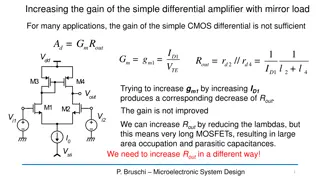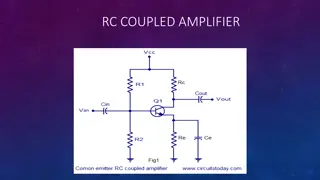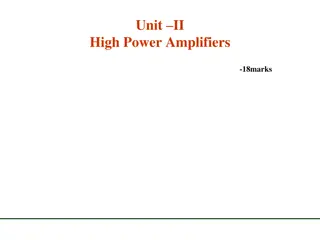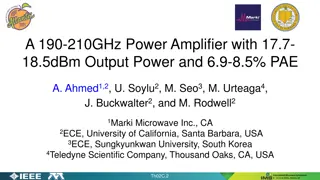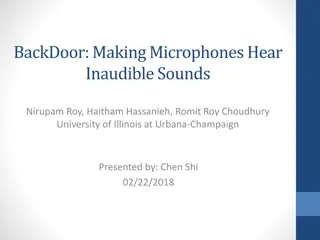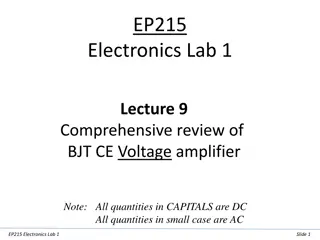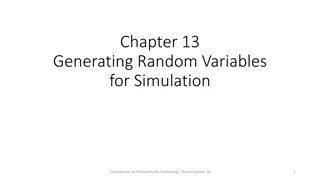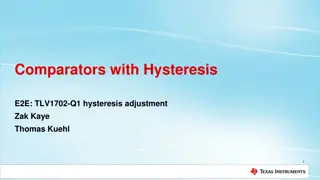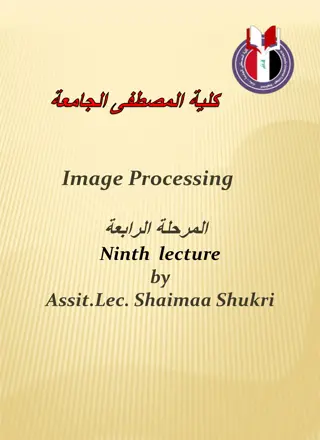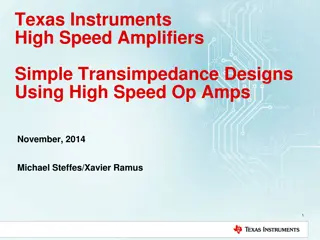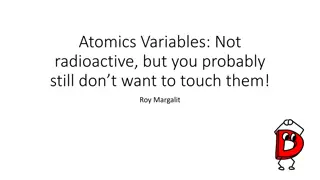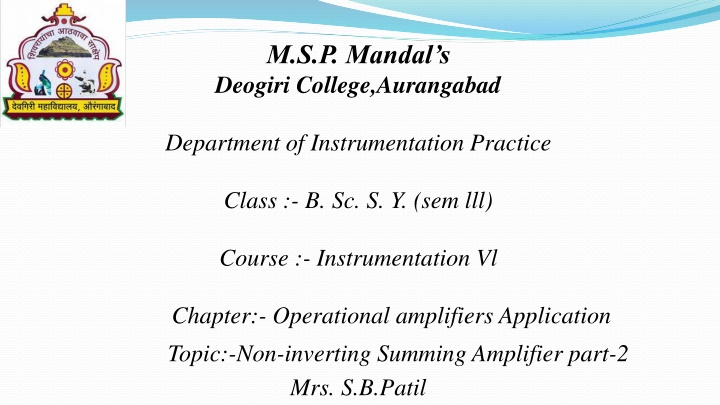
Non-Inverting Summing Amplifiers in Instrumentation Practice
"Learn about the advantages of non-inverting summing amplifiers compared to inverting configurations. Explore the application and benefits of non-inverting operational amplifiers in instrumentation practice."
Download Presentation

Please find below an Image/Link to download the presentation.
The content on the website is provided AS IS for your information and personal use only. It may not be sold, licensed, or shared on other websites without obtaining consent from the author. If you encounter any issues during the download, it is possible that the publisher has removed the file from their server.
You are allowed to download the files provided on this website for personal or commercial use, subject to the condition that they are used lawfully. All files are the property of their respective owners.
The content on the website is provided AS IS for your information and personal use only. It may not be sold, licensed, or shared on other websites without obtaining consent from the author.
E N D
Presentation Transcript
M.S.P. Mandals Deogiri College,Aurangabad Department of Instrumentation Practice Class :- B. Sc. S. Y. (sem lll) Course :- Instrumentation Vl Chapter:- Operational amplifiers Application Topic:-Non-inverting Summing Amplifier part-2 Mrs. S.B.Patil
Non-inverting Summing Amplifier we can also use the non-inverting input of the operational amplifier to produce a non-inverting summing amplifier. We have seen above that an inverting summing amplifier produces the negative sum of its input voltages then it follows that the non-inverting summing amplifier configuration will produce the positive sum of its input voltages.
As its name implies, the non-inverting summing amplifier is based around the configuration of a non-inverting operational amplifier circuit in that the input (either ac or dc) is applied to the non-inverting (+) terminal, while the required negative feedback and gain is achieved by feeding back some portion of the output signal (VOUT) to the inverting (-) terminal as shown. Non-inverting Summing Amplifier
So whats the advantage of the non-inverting configuration compared to the inverting summing amplifier configuration. Besides the most obvious fact that the op-amps output voltage VOUTis in phase with its input, and the output voltage is the weighted sum of all its inputs which themselves are determined by their resistance ratios,
The biggest advantage of the non-inverting summing amplifier is that because there is no virtual earth condition across the input terminals, its input impedance is much higher than that of the standard inverting amplifier configuration. Also, the input summing part of the circuit is unaffected if the op-amps closed-loop voltage gain is changed.
However, there is more maths involed in selecting the weighted gains for each individual input at the summing junction especially if there are more than two inputs each with a different weighting factor. Nevertheless, if all the inputs have the same resistive values, then the maths involved will be a lot less. If the closed-loop gain of the non-inverting operational amplifier is made equal the number of summing inputs, then the op-amps output voltage will be exactly equal to the sum of all the input
That is for a two input non-inverting summing amplifier, the op-amps gain is equal to 2, for a three input summing amplifier the op-amps gain is 3, and so on. This is because the currents which flow in each input resistor is a function of the voltage at all its inputs. If the input resistances made all equal, (R1= R2) then the circulating currents cancel out as they can not flow into the high impedance non-inverting input of the op- amp and the voutput voltage becomes the sum of its inputs.
So for a 2-input non-inverting summing amplifier the currents flowing into the input terminals can be defined as:
If we make the two input resistances equal in value, then R1= R2= R
The standard equation for the voltage gain of a non-inverting summing amplifier circuit is given as:
The non-inverting amplifiers closed-loop voltage gain AVis given as: 1 + RA/RB. If we make this closed-loop voltage gain equal to 2 by making RA= RB, then the output voltage VObecomes equal to the sum of all the input voltages as shown.
Thus for a 3-input non-inverting summing amplifier configuration, setting the closed-loop voltage gain to 3 will make VOUTequal to the sum of the three input voltages, V1, V2and V3. Likewise, for a four input summer, the closed-loop voltage gain would be 4, and 5 for a 5-input summer, and so on.
Note also that if the amplifier of the summing circuit is connected as a unity follower with RAequal to zero and RBequal to infinity, then with no voltage gain the output voltage VOUTwill be exactly equal the average value of all the input voltages. That is VOUT= (V1+ V2)/2.
Summing Amplifier Applications So what can we use summing amplifiers for, either inverting or non-inverting. If the input resistances of a summing amplifier are connected to potentiometers the individual input signals can be mixed together by varying amounts.
For example, measuring temperature, you could add a negative offset voltage to make the output voltage or display read 0 at the freezing point or produce an audio mixer for adding or mixing together individual waveforms (sounds) from different instruments, etc) before sending them combined to an audio amplifier source channels (vocals,



